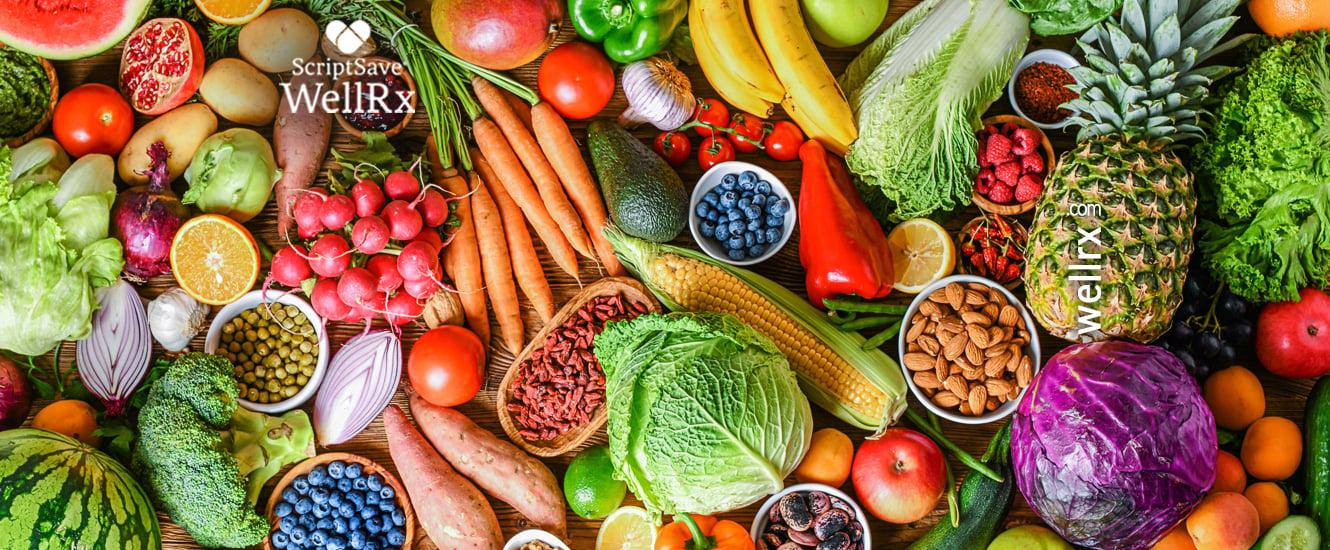Table of Contents
- Crafting Gourmet Meals on a Shoestring Budget
- Smart Shopping Tips for Maximizing Your $50 Food Budget
- Nutritious Recipes That Wont Break the Bank
- Stretching Your Grocery Dollars: Meal Planning for Thrifty Eaters
- Secrets to Affordable and Delicious Home Cooking
- Q&A
- Wrapping Up


Crafting Gourmet Meals on a Shoestring Budget
Transforming simple ingredients into gourmet dishes requires both creativity and resourcefulness, especially when working with a tight budget. The key lies in diversifying your ingredients. Begin by focusing on versatile basics like rice, pasta, and eggs that serve as foundations for many meals. These staples can be paired with seasonal vegetables from local markets to create hearty, nutritious dishes without breaking the bank. Local produce tends to be more affordable and supports sustainable farming, offering both cost-efficiency and freshness.
- Plan meals: Design a weekly menu focusing on ingredients you can use across multiple meals.
- Bulk purchases: Opt for purchasing in bulk where possible, especially for non-perishables like grains and dried beans.
- Creative combinations: Experiment with flavor by using spices and herbs to elevate simple dishes.
For a more structured approach, consider the table below which outlines how to allocate your $50 food budget effectively:
| Ingredient Type | Suggested Spend | Examples |
|---|---|---|
| Staples | $15 | Rice, Pasta, Potatoes |
| Proteins | $10 | Eggs, Beans |
| Vegetables | $15 | Carrots, Spinach, Seasonal Picks |
| Herbs and Spices | $5 | Basil, Cumin, Paprika |
| Miscellaneous | $5 | Condiments, Flour |
Leverage your pantry to build a rich culinary experience, infusing flair and diversity into every meal. Crafting gourmet quality on a budget not only minimizes costs but also provides an opportunity to explore the endless possibilities of flavor, texture, and presentation. Remember, the essence of gourmet lies not in expensive ingredients but in the care and creativity invested in the process.


Smart Shopping Tips for Maximizing Your $50 Food Budget
Managing a limited food budget can feel like a daunting task, but with the right strategies, you can ensure your $50 stretches further than you’d expect. Start by focusing on nutrient-dense staples that are versatile and long-lasting. Rice, beans, pasta, and canned vegetables are not only affordable but also offer numerous meal combinations that can keep your diet varied. Additionally, these staples have a long shelf life, allowing you to take advantage of bulk-buy discounts when possible. Another clever shopping tactic involves buying frozen fruits and vegetables, which often cost less than their fresh counterparts while retaining similar nutritional value.
- Make a list: Before heading to the store, write down exactly what you need to avoid impulse buys.
- Compare unit prices: Look at the cost per ounce or pound to get the best deals on bulk items.
- Embrace store brands: Generic or store brands often offer the same quality at a fraction of the cost.
Being strategic about where and how you shop can also contribute to maximizing your budget. Consider local farmers’ markets for discounted prices on fresh produce, especially near closing hours when vendors might offer markdowns. Emphasize meal planning to reduce waste and ensure that you use every item you purchase. To give you an idea of how to allocate your budget effectively, here’s a simple breakdown:
| Category | Suggested Spending |
|---|---|
| Grains & Pasta | $10 |
| Proteins (Beans, Eggs) | $15 |
| Fruits & Vegetables | $15 |
| Miscellaneous (Spices, Oils) | $10 |


Nutritious Recipes That Wont Break the Bank
Exploring budget-friendly meals that don’t sacrifice nutrition can be a delightful culinary adventure. It’s all about selecting ingredients that are both economic and nutrient-rich. Stock up on staples like lentils, beans, rice, and seasonal vegetables. These ingredients serve as the backbone to a variety of hearty meals while keeping your spending in check. Likewise, fruits such as bananas and apples fulfill the role of versatile and affordable snacks or dessert components.
- Lentil Soup: Combine lentils, carrots, onions, and a broth of your choice. Flavor with herbs like thyme and basil for a comforting bowl that is as affordable as it is nutritious.
- Stir-Fried Vegetables: Utilize whatever is in season, mixing broccoli, bell peppers, and onions. Toss them in soy sauce and ginger for an easy, flavorful dish.
- Oatmeal Breakfast Delight: Enhance your morning oats with slices of banana, a sprinkle of cinnamon, and a dollop of yogurt for a balanced start to the day.
Consider creating a flexible menu using a mix-and-match approach to maintain variety while making the most of your ingredients. Here’s a simple structure to guide your shopping list and meal planning. Take advantage of bulk buys for staples to stretch your budget further. Remember, creativity in the kitchen is key: mix, match, and savor your journey of affordable sophistication.
| Ingredient | Estimated Cost |
|---|---|
| 1 lb Lentils | $2.50 |
| Seasonal Veggies | $10.00 |
| Oats (large pack) | $3.50 |
| Bananas (per bunch) | $2.00 |
| Total | $18.00 |


Stretching Your Grocery Dollars: Meal Planning for Thrifty Eaters
Creating meals while adhering to a tight budget requires meticulous planning and a creative mindset. Stretching those grocery dollars starts with understanding what you have on hand and taking advantage of sales and discounts. A well-thought-out meal plan can turn a modest budget into a culinary adventure rather than a restriction. Begin by auditing your pantry and jotting down staples that can serve as the backbone for multiple meals. Think of items like rice, pasta, canned beans, and spices, which can be the springboard for a variety of dishes. Seasonal vegetables not only add freshness to your meals but also are often the most budget-friendly options at the grocery store.
After getting a sense of your inventory, construct meals that utilize these ingredients efficiently. Incorporating a protein rotation such as eggs, beans, or low-cost chicken cuts can provide necessary variety while keeping costs low. Don’t shy away from experimenting with different cooking techniques such as broiling, stir-frying, or one-pot cooking to make the most of inexpensive ingredients. Consider making dishes like a vegetable stir-fry, hearty bean chili, or a simple pasta primavera. These budget-conscious meals can be both satisfying and nutritionally rich. Planning for leftovers is another smart strategy, allowing yesterday’s dinner to become today’s packed lunch.
A well-organized shopping list further supports your frugal endeavors. Each week, list out only the ingredients needed to complete your meal plan, avoiding impulse buys. Here’s an example of a $50 weekly budget breakdown:
| Category | Item | Estimated Cost |
|---|---|---|
| Proteins | Eggs, Chicken Thighs, Canned Beans | $15 |
| Produce | Carrots, Broccoli, Spinach | $10 |
| Grains | Rice, Pasta | $7 |
| Pantry Staples | Spices, Oil, Garlic | $5 |
| Dairy | Cheese, Milk | $8 |
| Miscellaneous | Coffee, Snacks | $5 |
By setting spending priorities and sticking to your list, you ensure each dollar works towards a week of wholesome, balanced meals. Meal prepping and batch cooking can save both time and money, reducing the temptation to resort to more expensive convenience foods. Remember, with a little creativity and planning, you can enjoy an array of meals, even on a limited budget.


Secrets to Affordable and Delicious Home Cooking
Mastering the art of frugality without sacrificing taste is truly about creativity and resourcefulness in the kitchen. To eat well on limited funds, embrace the savings found in planning meals around ingredient versatility. For example, a simple roast chicken can stretch across several meals: savor it whole one night, then use the leftovers for a hearty chicken soup and delicious sandwiches. By purchasing whole, versatile ingredients rather than pre-packaged or single-use items, you maximize both your savings and your flavor potential.
Making smart shopping decisions is key to sticking to a lean budget. Stock up on pantry essentials like rice, beans, and pasta, which provide a filling base and can easily be transformed with a few fresh ingredients. When buying fresh produce, focus on in-season fruits and vegetables, as they are not only more affordable but also at their peak of flavor. Buying in bulk and utilizing local farmer’s markets can also provide quality produce at a fraction of supermarket prices. Consider making a shopping list to avoid impulse buys and ensure you get what’s most needed.
| Ingredient | Average Cost | Usage Ideas |
|---|---|---|
| Beans | $2 – $3 | Soups, salads, burritos |
| Whole Chicken | $5 – $7 | Roast, stew, sandwiches |
| Pasta | $1 – $2 | Casseroles, salads, main dishes |
| Seasonal Vegetables | $1 – $2 per lb | Sides, stir-fries, snacks |
Food waste is a major budget buster, so practice the art of using leftovers creatively. Leftover vegetables can easily become a scrumptious frittata or stir-fry, while stale bread transforms into crunchy croutons or delightful bread pudding. By reinventing leftovers, you’ll not only save money but also introduce variation to your meals, keeping your dining experience exciting. Every ingredient bursting into a medley of flavors with some clever planning is the hallmark of a seasoned home chef who can do wonders with just $50 a week.




0 Comments